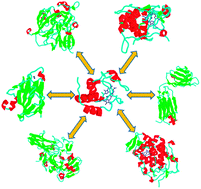Principles and patterns in the interaction between mono-heme cytochrome c and its partners in electron transfer processes†‡
Abstract

- This article is part of the themed collection: Cytochromes
Maintenance work is planned for Wednesday 1st May 2024 from 9:00am to 11:00am (BST).
During this time, the performance of our website may be affected - searches may run slowly and some pages may be temporarily unavailable. If this happens, please try refreshing your web browser or try waiting two to three minutes before trying again.
We apologise for any inconvenience this might cause and thank you for your patience.
* Corresponding authors
a
Magnetic Resonance Center (CERM)–University of Florence, Via L. Sacconi 6, 50019 Sesto Fiorentino, Italy
E-mail:
ivanobertini@cerm.unifi.it
Fax: +39 055 4574271
Tel: +39 055 4574272
b Department of Chemistry–University of Florence, Via della Lastruccia 3, 50019 Sesto Fiorentino, Italy

 Please wait while we load your content...
Something went wrong. Try again?
Please wait while we load your content...
Something went wrong. Try again?
 Fetching data from CrossRef.
Fetching data from CrossRef.
This may take some time to load.
Loading related content
